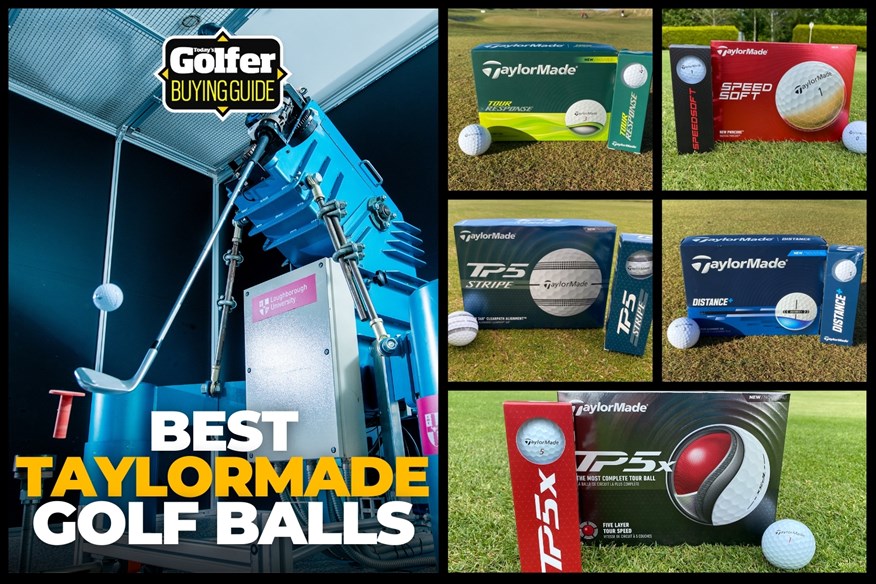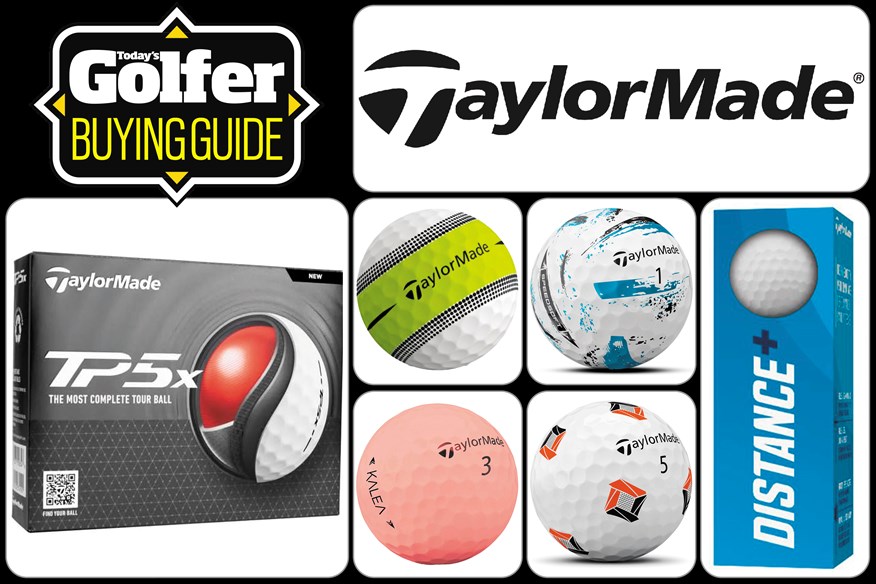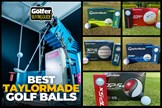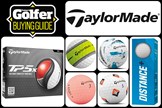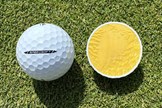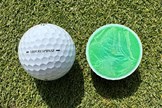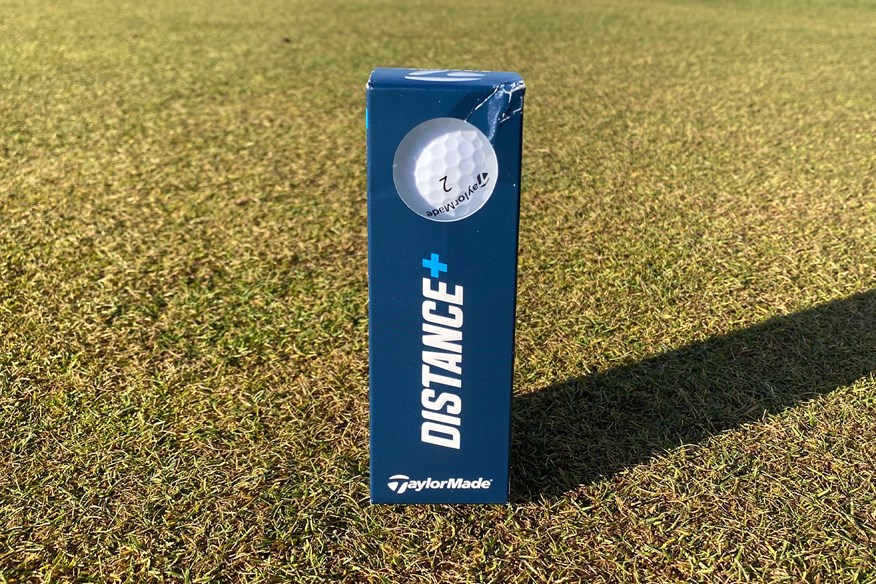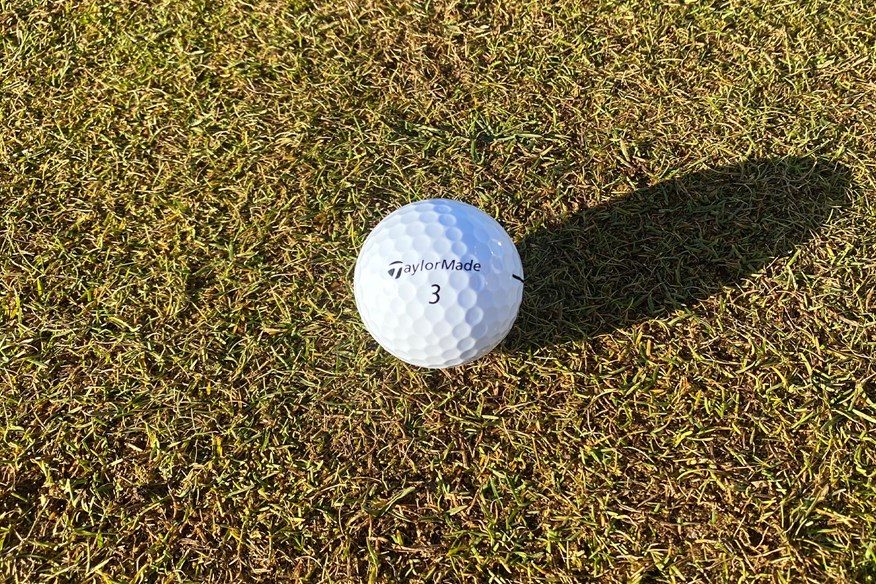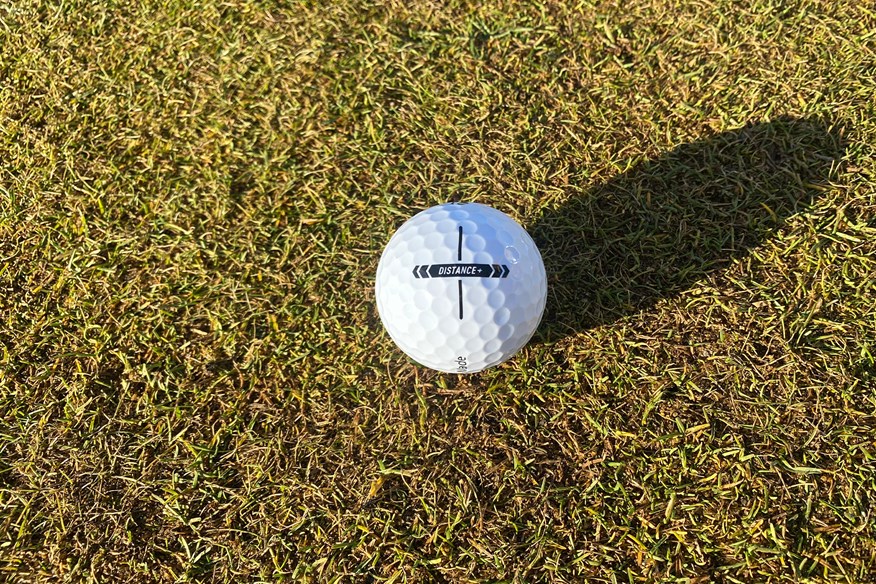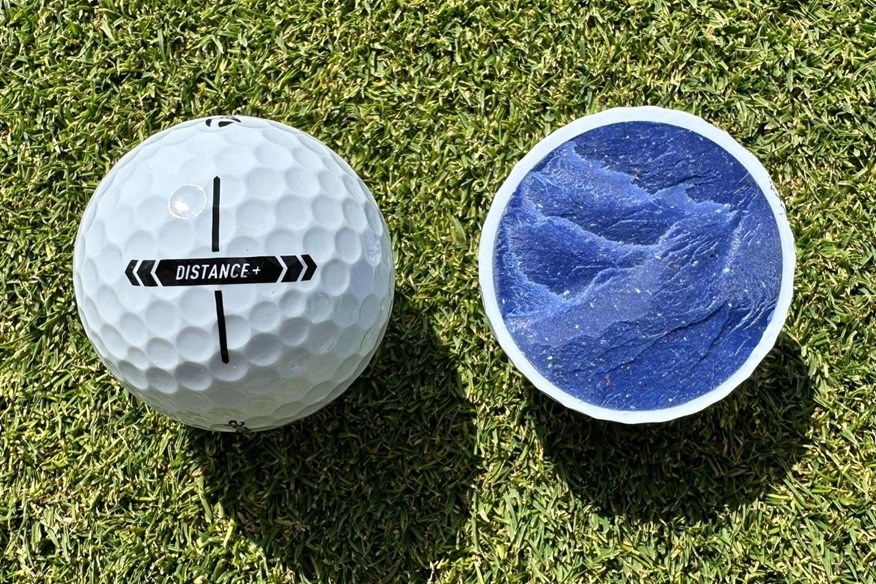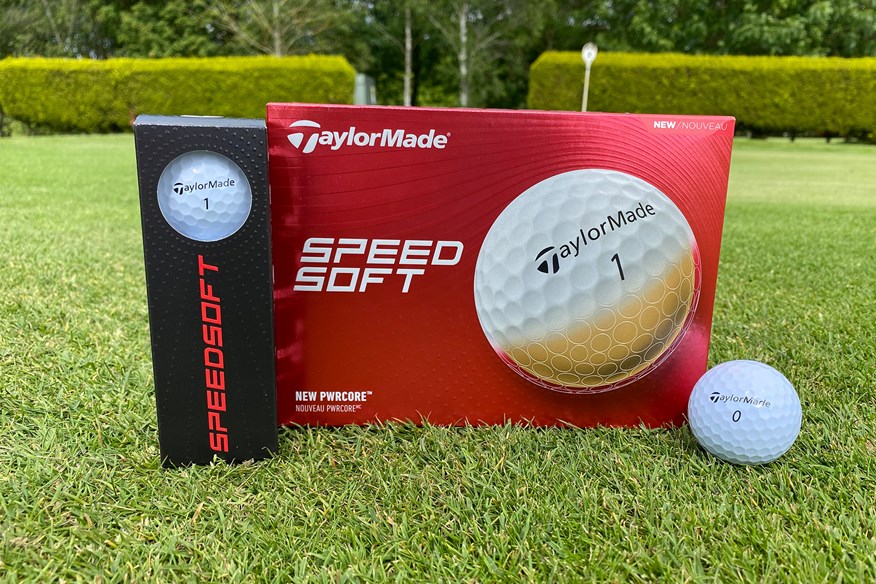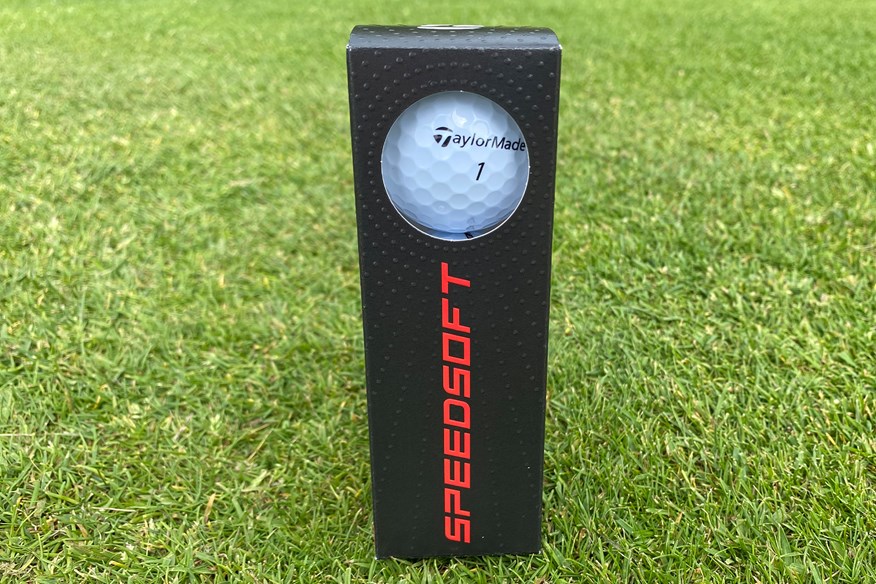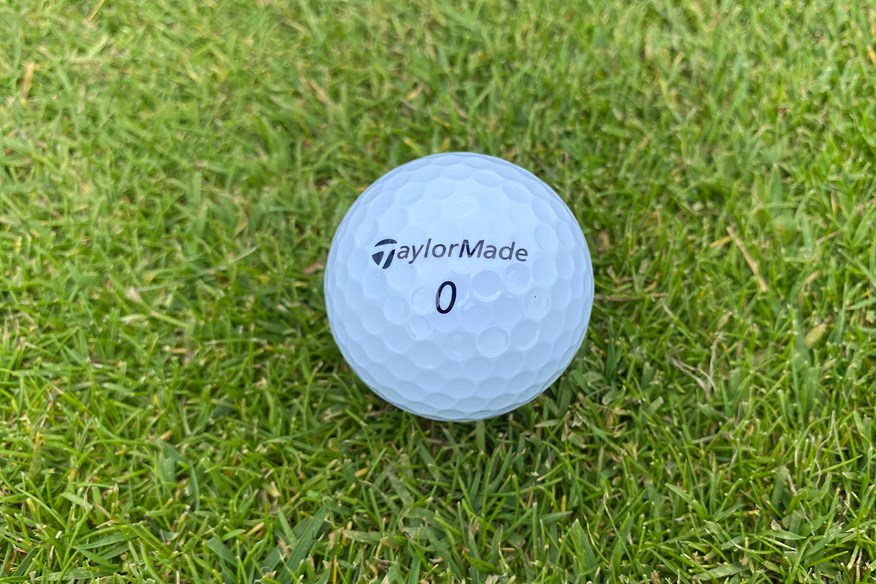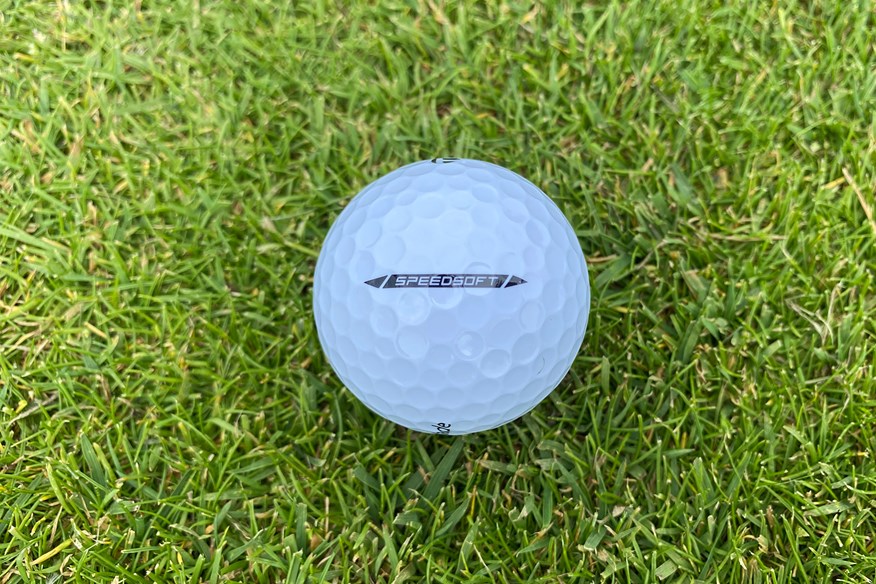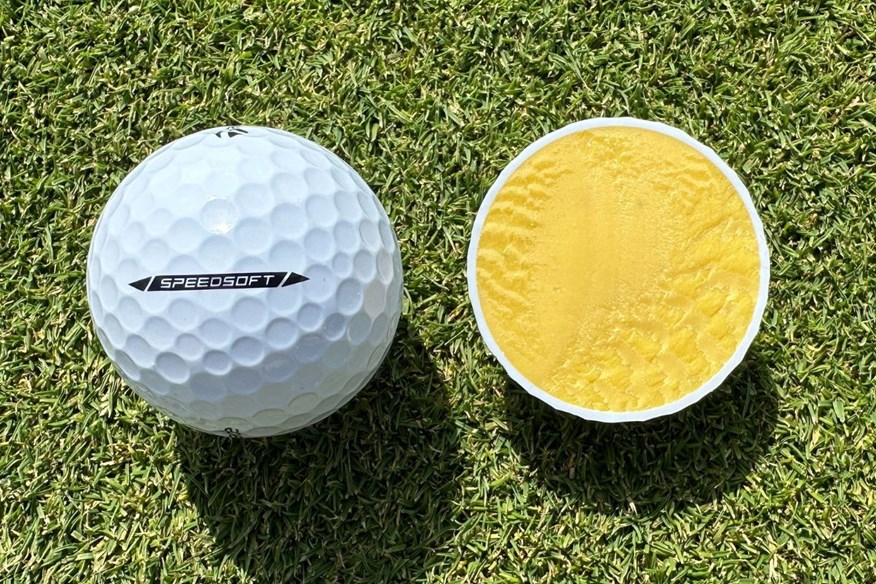Best TaylorMade golf balls 2025: All models tested on-course and on an R&D robot
Last updated:
Click here to find out how we conducted our 2025 golf balls test
We’ve tested the most popular and most-played TaylorMade golf balls on an R&D robot and on-course to help you determine which is the best golf ball for your game.
Jump to:
TaylorMade are firmly in the conversation for the best golf balls, and that’s not just because they’re used by some of the best golfers in the game.
If you’re looking to play with the same ball as Rory McIlroy or Nelly Korda, you don’t want to look any further than TaylorMade’s premium golf balls.
Best TaylorMade golf balls 2025: At a glance
To help you in your search for the right golf ball, we carried out our biggest ever golf ball robot test – 62 models from 13 manufacturers. As well as testing on the robot, every golf ball has been tested on-course to provide you with a personal verdict. Click the links below to see how we completed this year’s robot test and to find out exactly how we test golf equipment.
- 2025 golf ball robot test: 62 golf balls, 2,232 shots, 50,000 data points… find out what’s No.1 for you
- How we test golf equipment at Today’s Golfer
TaylorMade have a refined range of golf balls, including one of the best high-spin golf balls and one of the best low-spin golf balls. No matter what you’re looking for, you’ll be able to find a suitable option within TaylorMade’s range of golf balls.
Best TaylorMade golf balls 2025
Bronze medal for off-the-tee performance
Best five-piece golf ball
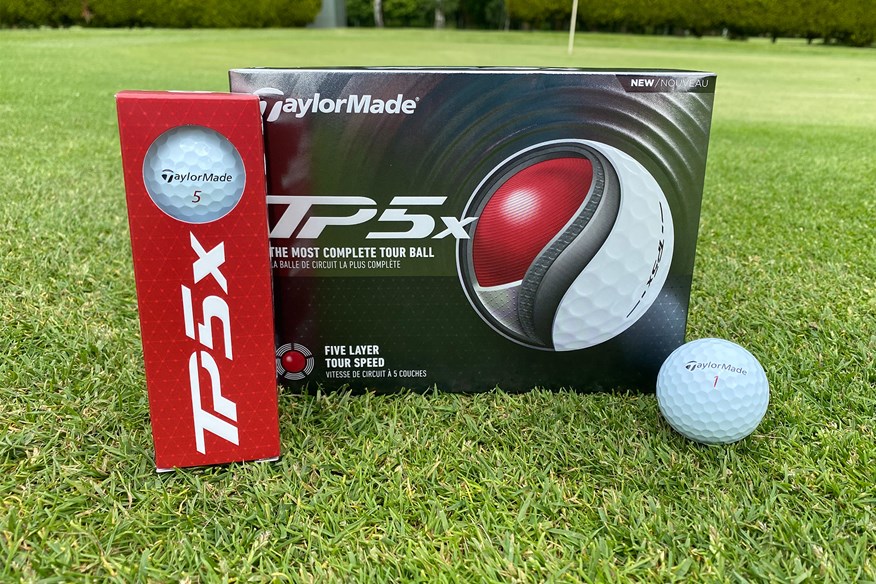

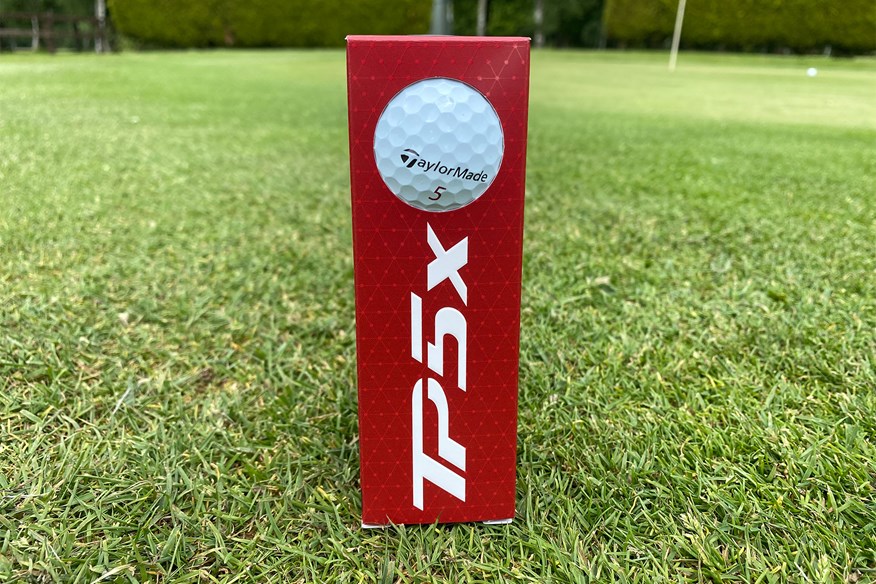
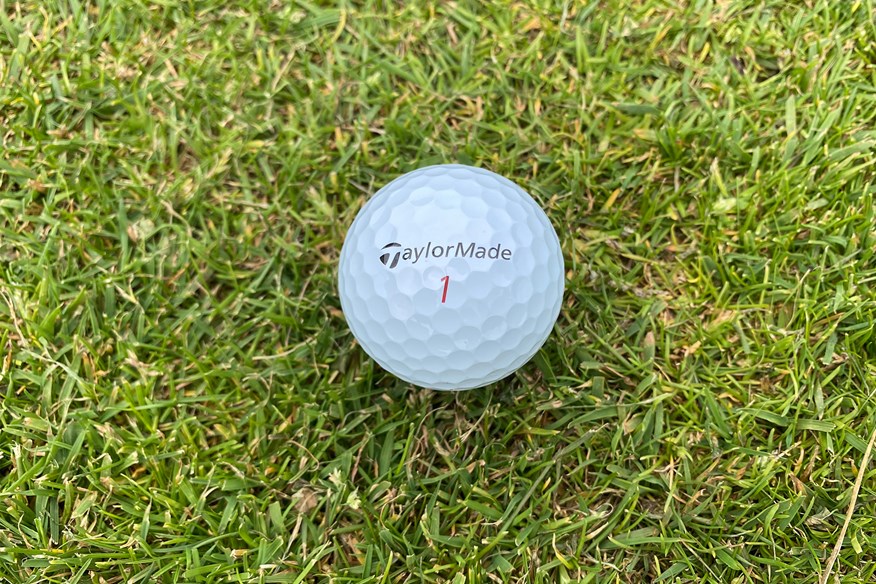
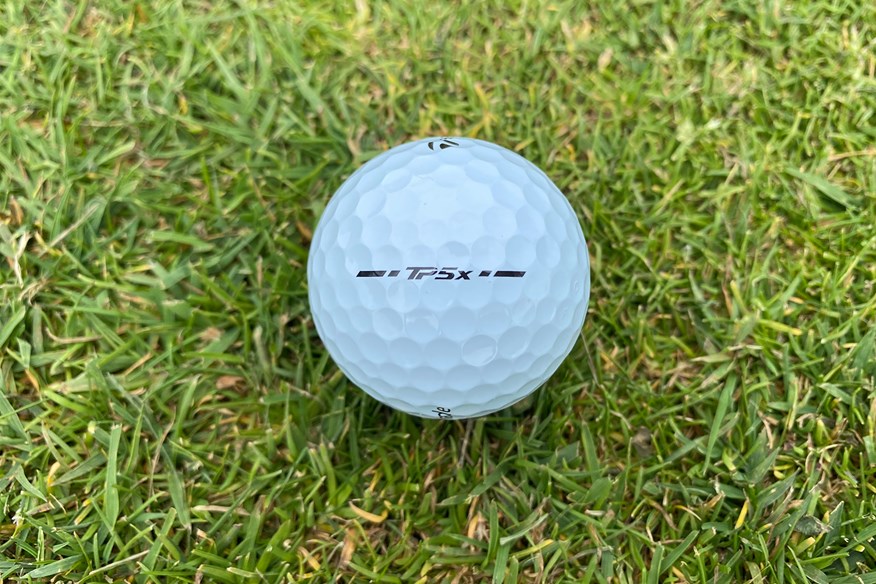
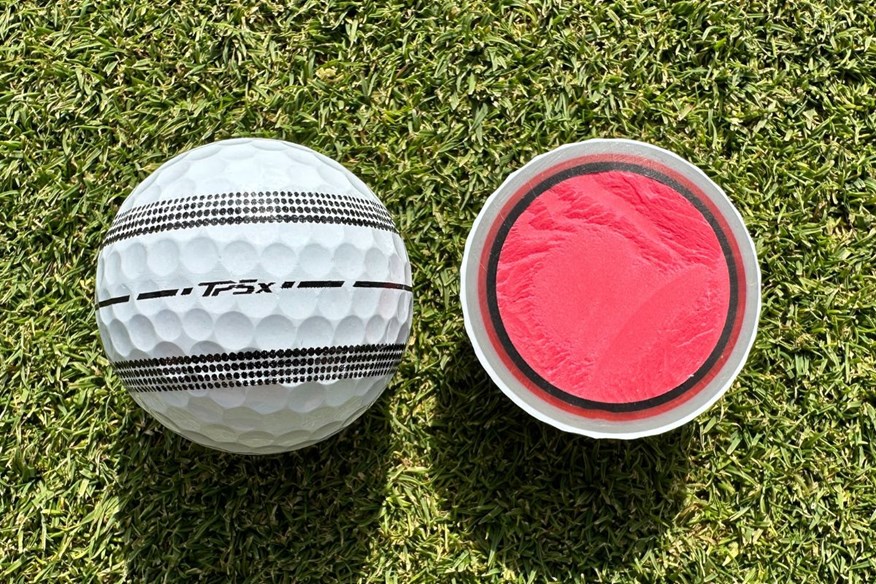
The TaylorMade TP5x steps up into a league of its own off the tee at the 78mph driver swing speed. It's a yard longer than the second-best performing golf ball and 0.4mph faster. At 93mph, TP5x is strong once again, being the fastest golf ball and the second longest.
Off-the-tee performance of the TP5x at both swing speeds is impressive, and it helps it achieve the bronze medal for off-the-tee performance. At 114mph, there is a drop-off in performance, but not enough to hinder the TP5x's overall score.
Approaching and playing around greens, the TP5x isn't as high-spinning as the TP5, but this model is sold as a low-spinning golf ball. With that in mind, it delivers a good amount of spin with the 7-iron (4,609rpm) and 40-yard pitch shots (6,042rpm).
TP5x delivers fast ball speeds, which makes it a very efficient golf ball. If you prioritise distance, the TP5x has to be in your thoughts, but not if you have a quick swing speed. If you're looking for more spin and control, I'd suggest looking at the TP5 instead.
On-course verdict
I'm very split between whether I prefer the firmer and more distance-oriented TP5x or the softer and higher-spinning TP5. If I'm being honest, my game benefits much more from a higher-spinning golf ball, so I think I have to side with Rory on this one and go for the TP5.
The reason I'm split is because I much prefer the firmer feel and response of the TP5x. I'm not particularly interested in the extra distance the TP5x offers because I'd much rather give up a couple of yards off the tee in exchange for putting the ball a couple of yards closer from the fairway.
The TP5x is well represented on Tour, despite a couple of players - including Rory - moving over to the TP5. It's clear to see why this five-piece golf ball is popular on Tour and in the amateur ranks, because it is solid from tee to green with an emphasis on eeking out a couple more yards.
I'm slightly in favour of the TP5, but if you ask me again in a couple of months, but opinion could well have changed.
Read our full TaylorMade TP5x golf ball review.
Pros
- High feedback and response
- Quality performance from tee to green
- Widely played on Tour
Cons
- Not as much short-game spin as the TP5
| Carry distance (yds) | Driver 114mph - 272.5 | Driver 93mph - 210.3 | Driver 78mph - 163.6 | 7-iron - 157.2 |
| Ball speed (mph) | Driver 114mph - 163.7 | Driver 93mph - 134.9 | Driver 78mph - 114.3 | 7-iron - 109.4 |
| Backspin (rpm) | Driver 114mph - 2,700 | Driver 93mph - 2,777 | Driver 78mph - 2,548 | 7-iron - 4,609 | Pitch - 6,042 |
| Launch angle (°) | Driver 114mph - 11 | Driver 93mph - 12.5 | Driver 78mph - 13.7 | 7-iron - 21.1 | Pitch - 29.9 |
| Descent angle (°) | Driver 114mph - 37.1 | Driver 93mph - 32.5 | Driver 78mph - 27.7 | 7-iron - 45.2 | Pitch - 35.1 |
| Peak height (yds) | Driver 114mph - 32.1 | Driver 93mph - 22.6 | Driver 78mph - 15.8 | 7-iron - 29.9 | Pitch - 6.6 |
| Compression (psi) | 117 |
- Speed-wrapped core
- Progressive 5-layer construction
- Seamless Tour flight dimple pattern
- 322 dimples
- 5-Piece construction
- Available in white only
- Alternative models include Pix, Stripe, and Limited Edition patterns
Silver medal for short game performance
Best five-piece golf ball for slow swing speeds
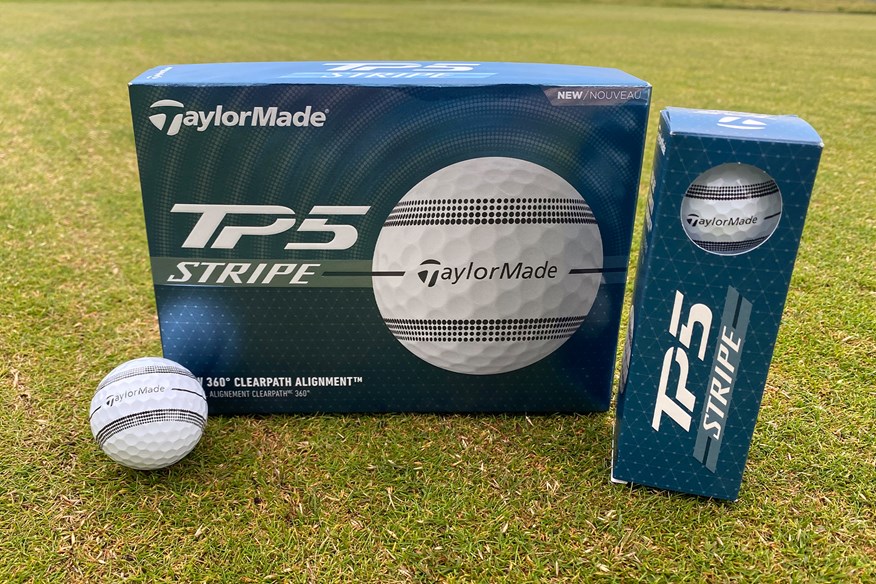

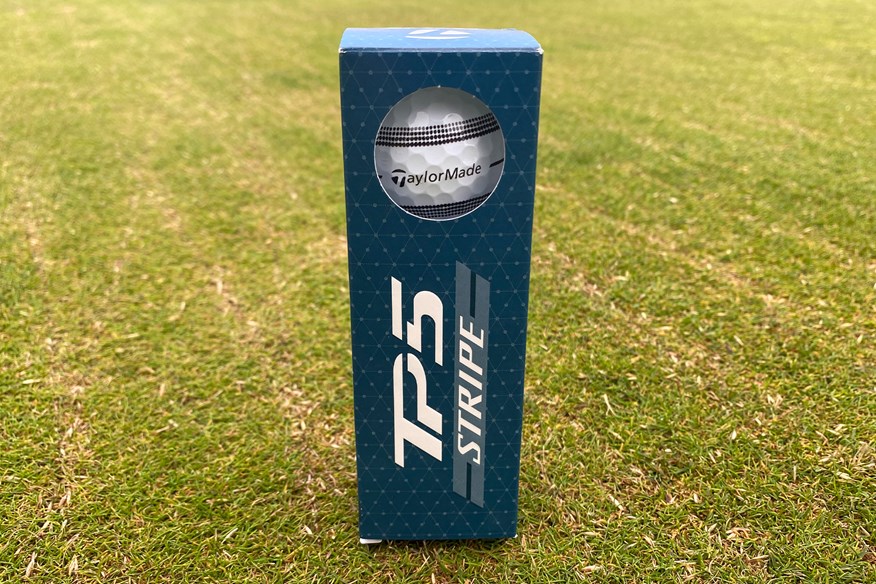
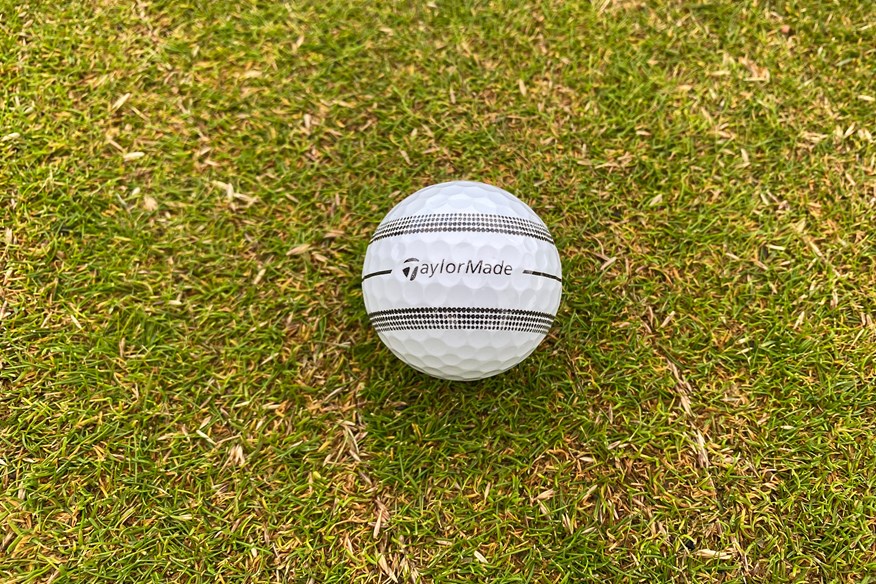
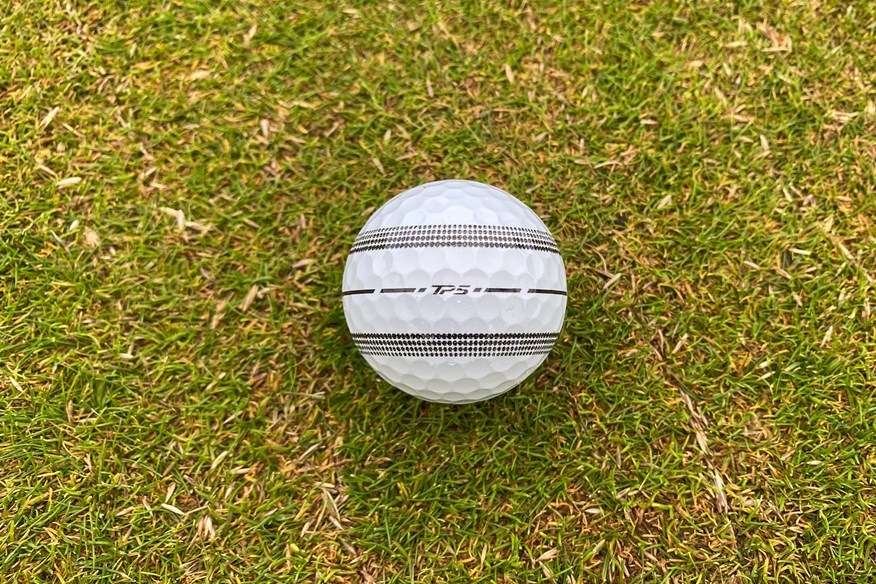
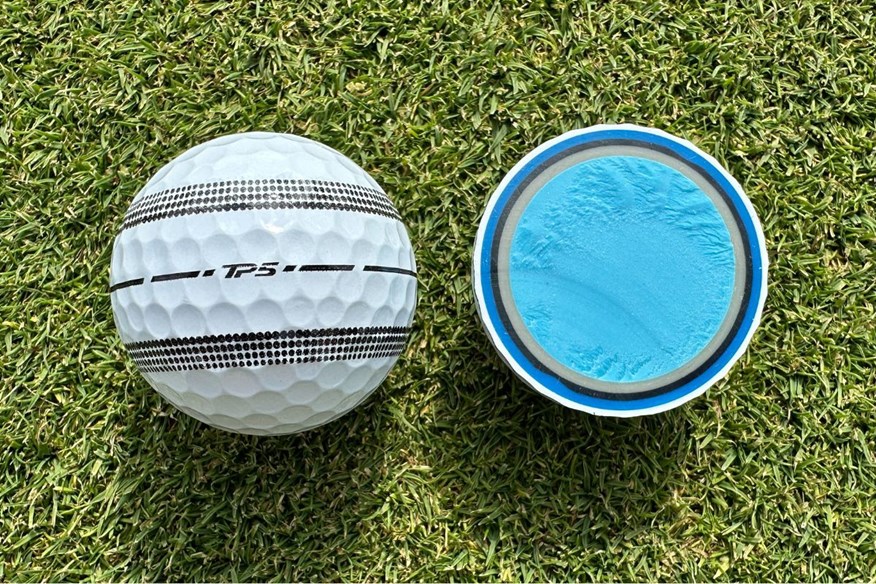
The TaylorMade TP5 is known for being TaylorMade's higher-spinning Tour-level golf ball. It gained popularity on Tour over the last year, having been put in play by Rory McIlroy and one of the best iron players in the world, Collin Morikawa.
A big reason why Tour pros and amateurs elect to play TP5 is because of how soft it is and how well it behaves around the greens. TP5 is the third-highest-spinning golf ball in the entire test (6,100rpm) from the 40-yard pitch shot, and that's good enough for the silver medal in the four- and five-piece category.
Also, TP5 emerged from our robot test as being very impressive for approach play, producing good distance (156.3 yards), the third steepest descent angle (45.3°), the second-highest backspin (4,823), and fastest ball speeds (109mph). However, none of that was good enough to earn the TP5 an award because its carry distance consistency wasn't strong enough.
At slower swing speeds, TP5 is the fourth-best-performing golf ball off the tee. At quicker and moderate swing speeds, the performance isn't as consistent.
If you're looking for a golf ball to help you out around the greens, the TP5 has to be on your list. There's a good reason why so many Tour stars and amateur golfers love TP5, and you might end up being the same once you give it a go.
On-course verdict
I might not be on the same level as some of the TaylorMade Tour players who elect to use TP5 over TP5x, but I think I'm with them on this one.
I love the firmer feel of the TP5x, but I think it's hard to look beyond the TP5s strong greenside performance.
With TP5, you're guaranteed a golf ball that's going to behave if you miss a green from the fairway (or rough). This can be vital in helping you get up and down and save par.
My answer on TP5 vs. TP5x has changed over the years, but currently I'm in the TP5 camp.
Read our full TaylorMade TP5 golf ball review.
Pros
- Incredible short game spin and control
- Very soft feel
- Strong tee to green performance at slow swing speeds
Cons
- Not as responsive as the TP5x
| Carry distance (yds) | Driver 114mph - 268 | Driver 93mph - 208.8 | Driver 78mph - 162.6 | 7-iron - 156.3 |
| Ball speed (mph) | Driver 114mph - 162.3 | Driver 93mph - 134 | Driver 78mph - 113.9 | 7-iron - 109.6 |
| Backspin (rpm) | Driver 114mph - 2,825 | Driver 93mph - 2,911 | Driver 78mph - 2,676 | 7-iron - 4,823 | Pitch - 6,100 |
| Launch angle (°) | Driver 114mph - 10.8 | Driver 93mph - 12.6 | Driver 78mph - 13.6 | 7-iron - 20.7 | Pitch - 30 |
| Descent angle (°) | Driver 114mph - 37.2 | Driver 93mph - 33.4 | Driver 78mph - 28.1 | 7-iron - 45.3 | Pitch - 35.4 |
| Peak height (yds) | Driver 114mph - 31.6 | Driver 93mph - 23.1 | Driver 78mph - 15.8 | 7-iron - 29.8 | Pitch - 6.8 |
| Compression (psi) | 104 |
- Speed-wrapped core
- Progressive 5-layer construction
- Seamless Tour flight dimple pattern
- 322 dimples
- 5-Piece construction
- Available in white only
- Alternative models include Pix, Stripe, and Limited Edition patterns
Bronze medal for tee to green performance at 78mph
The TaylorMade Distance+ is towards the top of the leaderboard at all three driver swing speeds, which is exactly where you'd expect it to be. However, we didn't expect it to perform as well in approach play performance as it did.
The Distance+ is the bronze medal winner for tee to green performance at 78mph, and while a factor of that is its off-the-tee performance (161yds carry distance and 113mph ball speed), a greater factor is its approach play performance.
Generating 4,596rpm makes this the third-highest-spinning golf ball, and with a descent angle of 45.1°, it's the third-steepest landing two-piece golf ball. Definitely not what we expected of a distance model.
Sadly, spin does drop around the greens. For short game performance, the Distance+ is the lowest-spinning golf ball of the entire test (3,685rpm).
However, given how strong the Distance+ performs from tee to green, you might not miss many greens. As long as you're able to play with more roll out on the greens, the Distance+ is a great golf ball at an amazing price.
On-course verdict
I really like the TaylorMade Distance+, I think it's a much better golf ball than many people will imagine.
One area that really impresses me on course is this model's short game performance. I know it didn't perform well in our robot test, but on the golf course, I've never had an issue stopping this golf ball quickly, playing around the greens.
This is a really solid golf ball from tee to green, and one I recommend to anyone looking for a cheaper golf ball that performs everywhere on the golf course.
Read our full TaylorMade Distance+ golf ball review.
Pros
- Solid tee-to-green performance
- Strong approach play performance
- Impressive performer on-course
Cons
- Low short game performance backspin
| Carry distance (yds) | Driver 114mph - 270.9 | Driver 93mph - 208.3 | Driver 78mph - 161 | 7-iron - 155.7 |
| Ball speed (mph) | Driver 114mph - 162.9 | Driver 93mph - 133.4 | Driver 78mph - 113 | 7-iron - 108..5 |
| Backspin (rpm) | Driver 114mph - 2,704 | Driver 93mph - 2,476 | Driver 78mph - 2,314 | 7-iron - 4,596 | Pitch - 3,685 |
| Launch angle (°) | Driver 114mph - 11.1 | Driver 93mph - 13 | Driver 78mph - 14.1 | 7-iron - 21.2 | Pitch - 36.5 |
| Descent angle (°) | Driver 114mph - 37.1 | Driver 93mph - 31.2 | Driver 78mph - 27 | 7-iron - 45.1 | Pitch - 42.7 |
| Peak height (yds) | Driver 114mph - 32 | Driver 93mph - 21.8 | Driver 78mph - 15.4 | 7-iron - 29.6 | Pitch - 78.9 |
| Compression (psi) | 95 |
- React speed core
- Ultra-soft feel
- Aerodynamic dimple pattern
- Plus alignment aid
- 342 dimples
- 2-Piece construction
- Available in white and yellow
TaylorMade's hugely popular 3-piece golf ball
Best three-piece TaylorMade golf ball
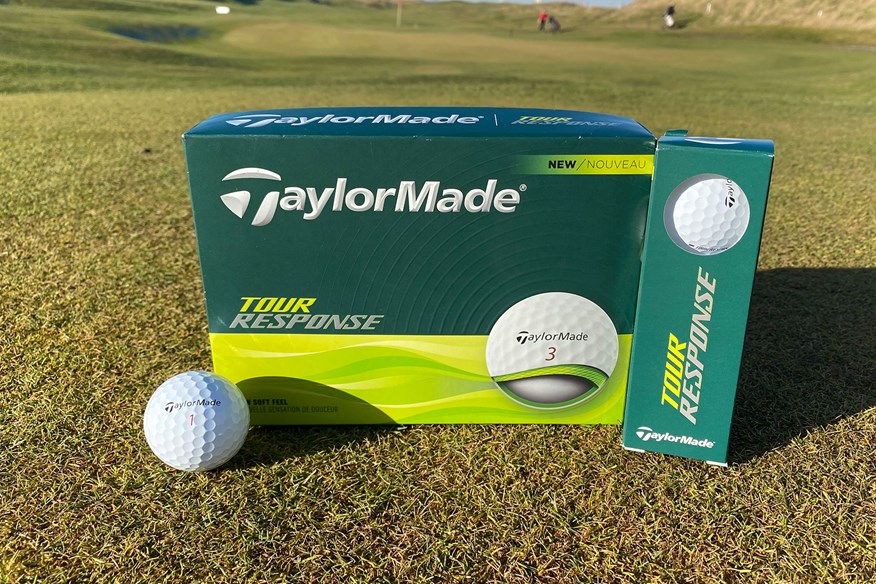


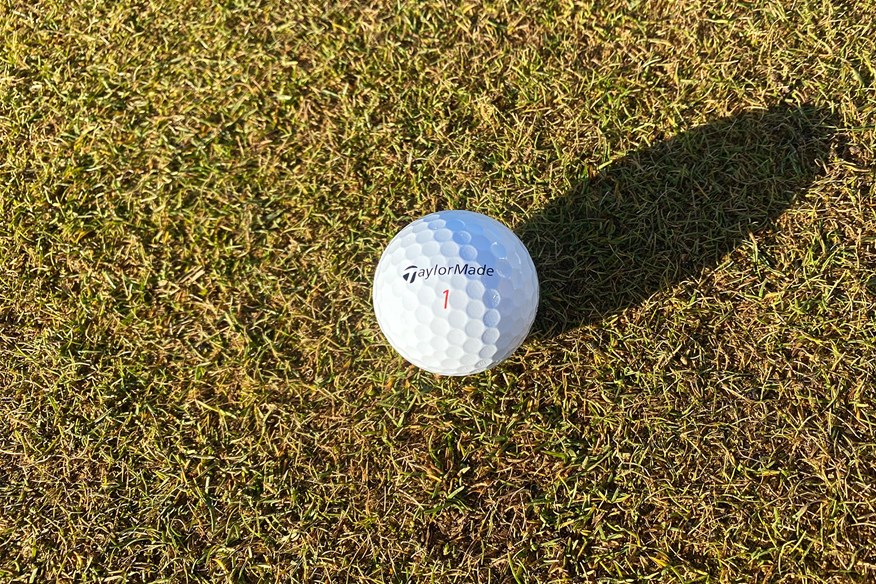
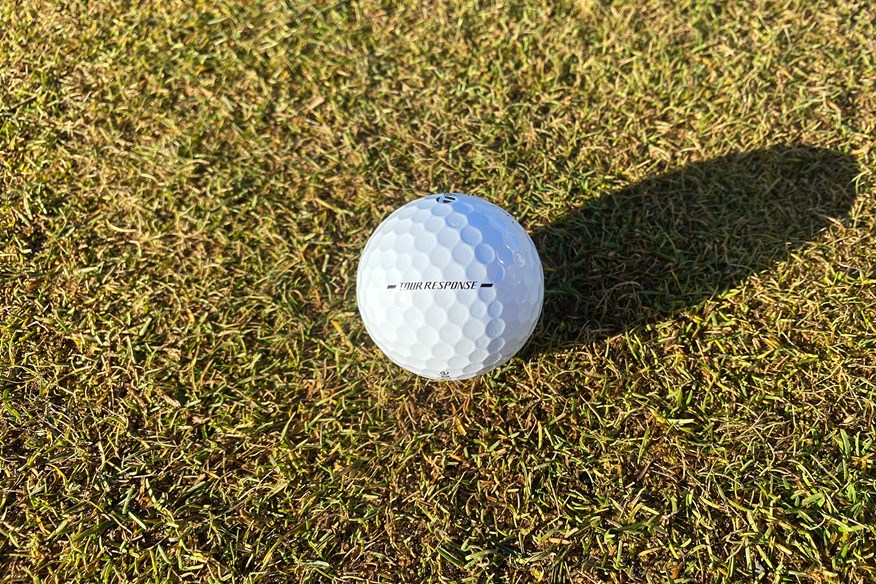
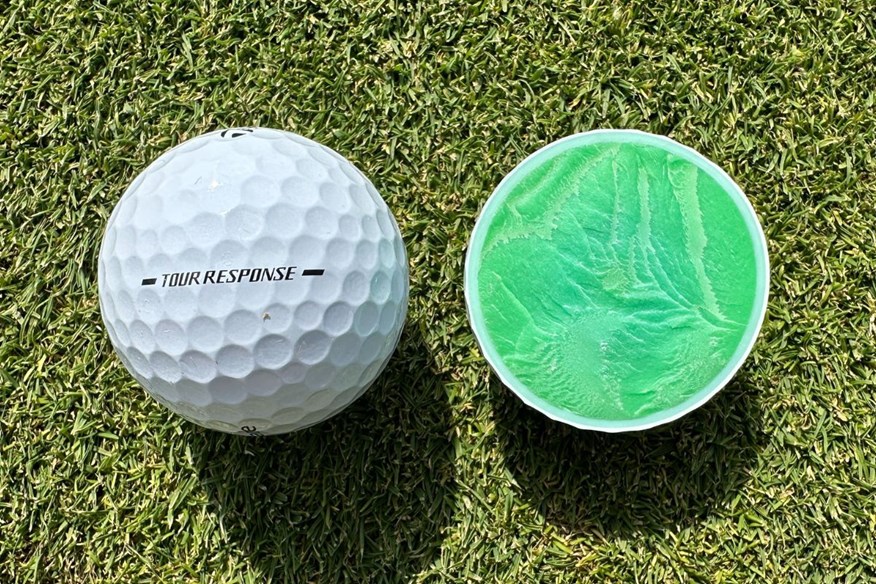
The TaylorMade Tour Response is highly thought of at Today's Golfer, but every year this golf ball has featured in our robot test, it's been somewhat underwhelming.
There's not much to grumble about with how the Tour Response performed this year, other than it's the second-lowest-spinning golf ball in the three-piece club golfer category around the greens (5,353rpm).
In every other area - off the tee, tee to green, and approach play - the Tour Response is a very middle-of-the-road golf ball, which isn't a bad place to be. We just have higher expectations. Especially when a good few of us know how well this ball performs on-course.
From the fairway, the Tour Response is again a low-spinning golf ball (4,249rpm), but it's not as far down the rankings as it is when playing around the greens.
Off the tee, you won't get a ridiculously long golf ball, nor will you get a massively high-spinning model; it's very average. That's not an insult. With Tour Response, you have a reliable golf ball that's easy to enjoy playing with.
On-course verdict
Off the tee, I was blown away by how well this golf ball performed. I remember the original Tour Response was slightly shorter for me compared to premium golf balls. However, that definitely isn’t the case with the 2025 Tour Response.
The second hole at Cleveland Golf Club measures 477 yards from the blue (winter) tees, and I was left with 163 yards for my second shot. I don’t think I’ve had that little distance in since summer when the ball rolled out on the links.
Distance continued to be very strong throughout the round, the ball launched through the window I wanted it to, and the ball flight was very penetrating, which enabled me to optimize distance.
Read our full TaylorMade Tour Response golf ball review.
Pros
- Long, penetrating distance
- High-spin greenside control
- Soft feel for instant feedback
Cons
- Cover scuffs quickly
| Carry distance (yds) | Driver 114mph - 268.6 | Driver 93mph - 207.7 | Driver 78mph - 160.5 | 7-iron - 157.9 |
| Ball speed (mph) | Driver 114mph - 162 | Driver 93mph - 133.2 | Driver 78mph - 113 | 7-iron - 108.6 |
| Backspin (rpm) | Driver 114mph - 2,647 | Driver 93mph - 2,586 | Driver 78mph - 2,423 | 7-iron - 4,249 | Pitch - 5,353 |
| Launch angle (°) | Driver 114mph - 11 | Driver 93mph - 13 | Driver 78mph - 13.9 | 7-iron - 21.5 | Pitch - 32 |
| Descent angle (°) | Driver 114mph - 36.1 | Driver 93mph - 31.8 | Driver 78mph - 27.1 | 7-iron - 44.7 | Pitch - 38 |
| Peak height (yds) | Driver 114mph - 30.7 | Driver 93mph - 22.1 | Driver 78mph - 15.3 | 7-iron - 29.6 | Pitch - 7.6 |
| Compression (psi) | 82 |
- Speed Wrapped core
- Speed mantle
- Tour-level spin and control
- Enhanced aerodynamics
- 322 dimples
- 3-Piece construction
- Available in white and yellow
- An alternative model is Stripe
TaylorMade's lowest-performance golf ball
If you're in the market for a two-piece TaylorMade golf ball, I'd suggest opting for the Distance+.
The SpeedSoft performed best in short game performance, where it still finished below the test average for backspin (5,596rpm) - ninth in the two-piece category and 41st overall.
We're somewhat disappointed by the performance of the SpeedSoft in our robot test, because a couple of us at TG have played with this and the Ink version on-course and loved it.
It might be that you give it a go yourself to make up your mind. However, if you're unsure, I wouldn't take the leap.
On-course verdict
The SpeedSoft is a ball I can see a boatload of golfers enjoying because they're soft-feeling and inexpensive.
I don't think the SpeedSoft is going to set the world alight with its overall performance from tee to green, but it's far from disappointing.
I prefer the SpeedSoft Ink version because the splashes of color are quirky, and it adds an extra element to the golf ball.
Distance isn't particularly strong with the SpeedSoft, so if you prioritize distance over spin, you'll be better-suited by the Distance+.
Pros
- Soft-feeling
- Reasonably priced
- Eye-catching design of the Ink range boosts visibility
Cons
- Reduced spin around greens
| Carry distance (yds) | Driver 114mph - 265 | Driver 93mph - 204.5 | Driver 78mph - 160 | 7-iron - 159.3 |
| Ball speed (mph) | Driver 114mph - 159.6 | Driver 93mph - 131.9 | Driver 78mph - 112.4 | 7-iron - 108.3 |
| Backspin (rpm) | Driver 114mph - 2,447 | Driver 93mph - 2,383 | Driver 78mph - 2,217 | 7-iron - 3,893 | Pitch - 5,596 |
| Launch angle (°) | Driver 114mph - 11.3 | Driver 93mph - 13.1 | Driver 78mph - 14.5 | 7-iron - 22 | Pitch - 31.6 |
| Descent angle (°) | Driver 114mph - 34.7 | Driver 93mph - 30.4 | Driver 78mph - 27 | 7-iron - 44.3 | Pitch - 37.5 |
| Peak height (yds) | Driver 114mph - 29.3 | Driver 93mph - 20.9 | Driver 78mph - 15.4 | 7-iron - 29.6 | Pitch - 7.6 |
| Compression (psi) | 50 |
- PWRCORE technology
- Soft Sub 50 Compression core
- Extended flight dimple pattern
- 322 dimples
- 2-Piece construction
- Available in white, yellow, and pink
- An alternative model is Ink
Best TaylorMade golf balls 2025: Robot test data
| Golf ball | TaylorMade TP5x | TaylorMade TP5 | TaylorMade Distance+ | TaylorMade Tour Response | TaylorMade SpeedSoft |
| Compression | 117 | 104 | 95 | 82 | 50 |
| 114mph Driver Ball Speed (mph) | 163.7 | 162.3 | 162.9 | 162.0 | 159.6 |
| 114mph Driver Launch Angle (°) | 11.0 | 10.8 | 11.1 | 11.0 | 11.3 |
| 114mph Driver Backspin (rpm) | 2700 | 2825 | 2704 | 2647 | 2447 |
| 114mph Driver Carry Distance (yds) | 272.5 | 268 | 270.9 | 268.6 | 265.0 |
| 114mph Driver Height (yds) | 32.1 | 31.6 | 32 | 30.7 | 29.3 |
| 114mph Driver Descent Angle (°) | 37.1 | 37.2 | 37.1 | 36.1 | 34.7 |
| 93mph Driver Ball Speed (mph) | 134.9 | 134 | 133.4 | 133.2 | 131.9 |
| 93mph Driver Launch Angle (°) | 12.5 | 12.6 | 13 | 13.0 | 13.1 |
| 93mph Driver Backspin (rpm) | 2777 | 2911 | 2476 | 2586 | 2383 |
| 93mph Driver Carry Distance (yds) | 210.3 | 208.8 | 208.3 | 207.7 | 204.5 |
| 93mph Driver Height (yds) | 22.6 | 23.1 | 21.8 | 22.1 | 20.9 |
| 93mph Driver Descent Angle (°) | 32.5 | 33.4 | 31.2 | 31.8 | 30.4 |
| 78mph Driver Ball Speed (mph) | 114.3 | 113.9 | 113 | 113.0 | 112.4 |
| 78mph Driver Launch Angle (°) | 13.7 | 13.6 | 14.1 | 13.9 | 14.5 |
| 78mph Driver Backspin (rpm) | 2548 | 2676 | 2314 | 2423 | 2217 |
| 78mph Driver Carry Distance (yds) | 163.6 | 162.6 | 161 | 160.5 | 160.0 |
| 78mph Driver Height (yds) | 15.8 | 15.8 | 15.4 | 15.3 | 15.4 |
| 78mph Driver Descent Angle (°) | 27.7 | 28.1 | 27 | 27.1 | 27.0 |
| 7-Iron Ball Speed (mph) | 109.4 | 109.6 | 108.5 | 108.6 | 108.3 |
| 7-Iron Launch Angle (°) | 21.1 | 20.7 | 21.2 | 21.5 | 22.0 |
| 7-Iron Backspin (rpm) | 4609 | 4823 | 4596 | 4249 | 3893 |
| 7-Iron Carry Distance (yds) | 157.2 | 156.3 | 155.7 | 157.9 | 159.3 |
| 7-Iron Height (yds) | 29.9 | 29.8 | 29.6 | 29.6 | 29.6 |
| 7-Iron Descent Angle (°) | 45.2 | 45.3 | 45.1 | 44.7 | 44.3 |
| 40-Yard Pitch Ball Speed (mph) | 46.3 | 47.1 | 45.7 | 46.9 | 47.3 |
| 40-Yard Pitch Launch Angle (°) | 29.9 | 30 | 36.5 | 32.0 | 31.6 |
| 40-Yard Pitch Backspin (rpm) | 6042 | 6100 | 3685 | 5353 | 5596 |
| 40-Yard Pitch Carry Distance (yds) | 39.3 | 40.7 | 40.8 | 41.3 | 41.8 |
| 40-Yard Pitch Height (yds) | 6.6 | 6.8 | 8.9 | 7.6 | 7.6 |
| 40-Yard Pitch Descent Angle (°) | 35.1 | 35.4 | 42.7 | 38.0 | 37.5 |
Best TaylorMade golf balls 2025: Buying guide
TaylorMade are one of the game’s biggest and best manufacturers when it comes to all pieces of equipment. They produce a wide range of golf balls to accommodate the needs and wants of every golfer. The difficulty you’ll have is deciding which golf ball of theirs you should choose. To help you pick, I’ve put together a few considerations you should make to help you select the correct TaylorMade golf ball for your game.
Ability
Regardless of your ability, you will benefit from playing with the TaylorMade TP5 or TP5x. As TaylorMade’s premium golf balls, it’s probably not surprising that they’re the two models I recommend most. TaylorMade golf balls are perhaps not as versatile as other brands, so it’s important to choose wisely based on your ability and what you want a golf ball to do for your game.
Better and more seasoned golfers arguably should be playing with the best balls they can afford to be playing with because it will 100 per cent improve your game from tee to green. The flip side to that is, if you’re new to the game or play infrequently with your buddies, work colleagues, or whoever, then you might not have the game to warrant playing with premium golf balls for whatever reason. At that point, playing with cheap golf balls is perfectly understandable.
That being said, switching to one of the best value golf balls could help you play better golf and find more enjoyment – even if you do just play for fun.
Budget
Tied closely with ability is budget. Thankfully, TaylorMade golf balls, on the whole, are very reasonably priced.
Players who are new to the game or don’t get out often are more likely to budget when it comes to purchasing golf balls. Whereas more frequent and skilled golfers are less likely to budget and opt for more expensive golf balls. That’s not to say every golfer meeting one of those credentials behaves this way.
While I’ve probably been alive less number of years than some of you have played golf, I’ve had the pleasure of working in the golf industry for the entirety of my working life. During that time, I’ve seen golfers of all abilities splashing the cash on the latest golf clubs in the hope of improving their game and being thrifty when it comes to spending on golf balls – I’ve been a culprit of this myself in my early golfing days!
If there’s ever a piece of golf equipment you shouldn’t be frugal with, it’s golf balls!
Feel
The vast majority of golfers look for soft-feeling golf balls, which doesn’t really rule out any TaylorMade model. Many golfers enjoy soft-feeling golf balls because they deliver a sweet sensation off of every club in the bag – except if you skull one.
I enjoy playing with firmer golf balls because I feel as though they provide more feedback and a stronger response. However, feel is completely personal, and like I say, it’s tough to find a super-firm golf ball because most are made to be soft to please the needs of more golfers.
Performance
Every TaylorMade golf ball comes fitted with specific technology in order to perform in a particular manner – this is often outlined on the box. For instance, it might inform you that a certain model is designed to travel high and far off the tee with low spin but grab and spin on the greens. Another golf ball might say it produces low flight off the tee and mid-spin in the short game.
TaylorMade offers golf balls for every golfer’s needs; whether you’re looking for a high-spinning, high-launching, soft, firm, or fast golf ball, TaylorMade has you covered.
To save you from working out which model you think is right for you. We have the answer. We’ve carried out a mammoth robot test to help you see how well a ball stacks up to the claims made by the manufacturer.
Spin
Ideally, every golf ball would produce low-spin off the tee and high-spin in your approach game. However, not all golf balls are designed that way. The majority of golf balls are designed to produce low driver spin and generate distance off the tee, but not all golf balls are manufactured to generate high spin from irons and wedges.
Price generally correlates with short-game spin. Budget golf balls will generate less short-game spin than expensive golf balls, but there might not be much difference in your long-game spin. During a ball fitting at Titleist, I discovered that a Titleist Pro V1x and Titleist Velocity performed very similarly with my driver, but with a 7-iron, the spin dropped slightly with the Velocity, and then with a 60° wedge, the spin fell massively with the Velocity.
Spin in the golf ball comes from the combination of layers within the golf ball reacting with one another, hence why more expensive golf balls spin more in approach play because they consist of more layers and the technology is more refined. Cheaper golf balls tend to consist of two layers: the cover and core. Therefore, they don’t have the number of layers required to produce astronomical spin when attacking pins.
Another factor that helps to enhance spin is the cover material. Golf balls with a urethane cover tend to spin more (but not always) because it’s a more flexible material compared to ionomer or surlyn, which doesn’t create as much friction with the clubface as urethane does. Once again, it’s more expensive golf balls that feature urethane covers to generate higher spin on approach shots.
Spin is massively important because it can either make you hit and hold a green or hit and fly over the green. The best golf balls for spin are by far premium golf balls, closely followed by golf balls for mid-handicappers, because they feature much of the technology found in Tour-standard golf balls. If you feel as though you need high levels of spin when attacking greens, have a look at the best high-spin golf balls. Alternatively, if you feel as though spin is hurting your game, check out the best low-spin golf balls.
Distance
I would honestly say that distance is the last factor to consider when purchasing golf balls. The best way to figure out which golf balls are best for you is by working your way back from the green to the tee box. The best way of doing this is with a launch monitor to see your numbers, but if you don’t have access to one, you can do it with your eye very easily.
Start by hitting wedge shots into the green and see which balls are performing best with spin, then work your way back to 7-iron distance and look for the same numbers with slightly more of an eye on carry distance. You should have whittled it down to one or two golf balls, hit them off the tee, and look at which performs the best.
If you do it this way, I guarantee a premium golf ball will always come out on top if you’re testing one. However, if you’re doing this with cheaper golf balls, you’ll still see differences between the golf balls, and you will find one that performs well for you, or you might have the luxury of deciding between a handful.
By testing golf balls this way, you’ll end up with the ball that performs best in the short game, which is where you score. Distance is important, but there are other ways of improving distance without sacrificing spin in a golf ball.
Color
The most common golf ball color is white; however, there are plenty of other colors and designs to choose from. More vibrant colors, such as yellow, orange, or green, are all easy to pick up, and they help some people with visibility – hence why they make for the best winter golf balls.
Other ways of adding color to the golf ball can be by design, whether it be a splash of color seen on Vice golf balls or an alignment design which also helps with visibility, such as TaylorMade’s Pix golf balls or Callaway’s Triple Track golf balls.
If you’ve only ever played with white golf balls, it might be worth trying a more colorful golf ball, especially if you’re always the one asking your playing partners, “Where did that one go?”.
Alignment
More and more golf balls are being released with enhanced alignment, and even standard golf balls have a more prominent alignment stamp now than they’ve ever had. The majority of brands now offer golf balls with enhanced alignment aids. The enhanced alignment aids can be extremely useful for putting and even lining up shots on the tee. Another plus of alignment golf balls is the alignment serves as a tool for finding your golf ball either in the air or among the trees.
Best TaylorMade golf balls 2025: FAQs
What to read next
For performance insights tailored to your swing speed and preferences, head to our results hubs:
- Best 4 and 5-piece golf balls
- Best 3-piece golf balls
- Best 2-piece golf balls
- Best golf balls for fast swing speeds
- Best golf balls for average swing speeds
- Best golf balls for slow swing speeds
- Best golf balls for distance
- Best golf balls for approach play
- Best golf balls for mid-handicaps
- Best golf balls for beginners
- Most consistent golf balls
